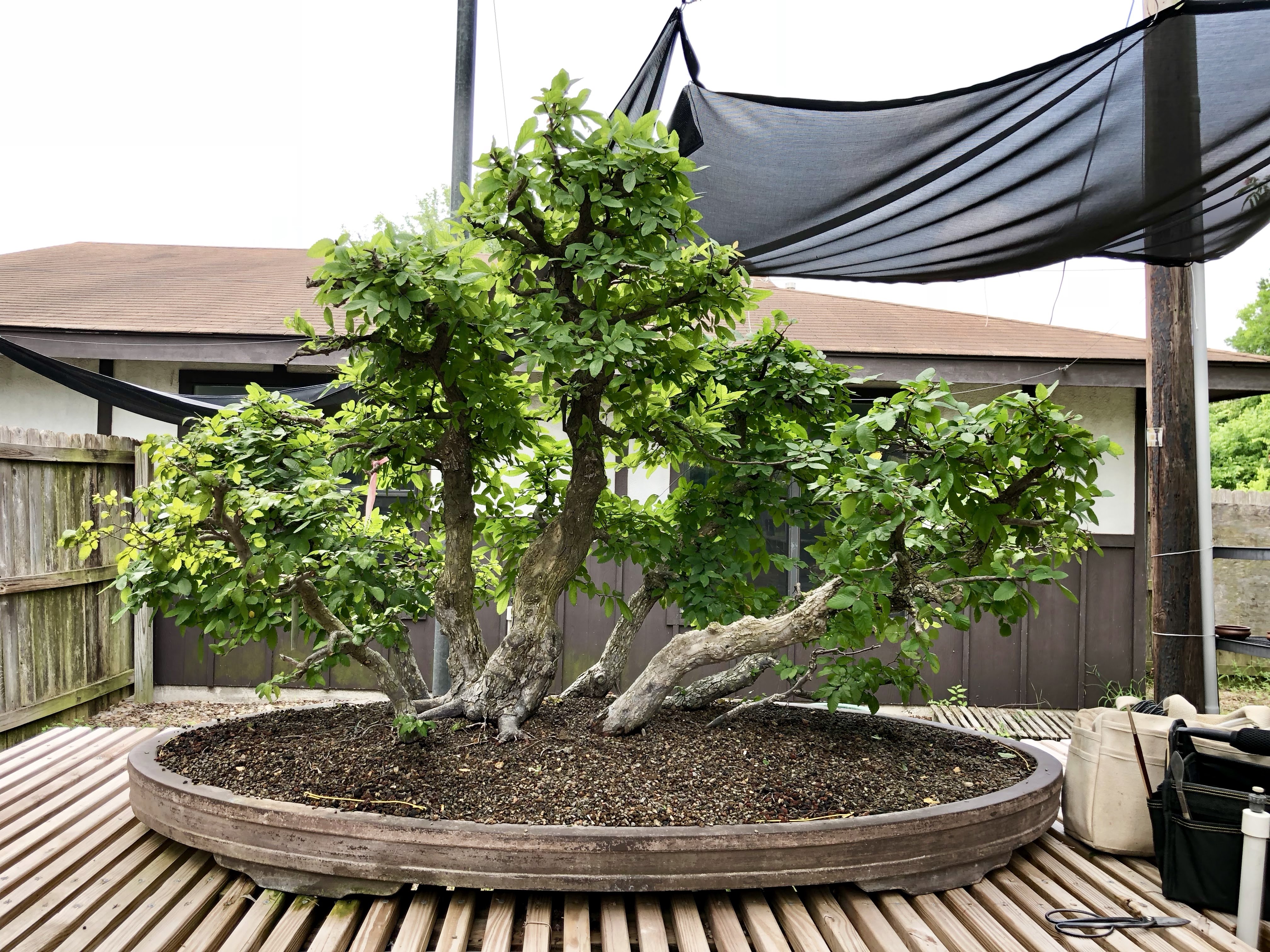 Photo by Joey McCoy | @joeybonsai
Photo by Joey McCoy | @joeybonsai
The Texas State Bonsai Exhibit has a collection of bonsai trees which they tend to, develop, and present at bonsai events. The pictured TTSBE Cedar Elm is an example of the work Hawk Eye can perform on collection owned trees of Imperial size. The blog post contains a series of photos which outline the scope of work performed on this specimen over the course of the last two years. This tree has significant history in association with the TTSBE Exhibit. The above photo was taken in April of 2019 after the first flush of Spring growth was pruned back and removal of unnecessary deadwood. The work was conducted by TTSBE Members and Hawk Eye Bonsai members.
 Photo by May Lau | @maylauphotography
Photo by May Lau | @maylauphotography
A photo of the back of the TTSBE Cedar Elm in April 2019 after it was trimmed.
 Photo by May Lau | @maylauphotography
Photo by May Lau | @maylauphotography
A photo of the TTSBE Cedar Elm in April 2019 before it was trimmed.
 Photo by Brandon Baldauf | @wizardsknow
Photo by Brandon Baldauf | @wizardsknow
A photo of the TTSBE Cedar Elm in May 2018 after it was trimmed.
 Photo by Brandon Baldauf | @wizardsknow
Photo by Brandon Baldauf | @wizardsknow
A photo Roland Lopez trimming the the TTSBE Cedar Elm in May 2018. He cut back the long running growth to one, two, or three nodes depending on where it was positioned on the tree. This is a general approach for balancing the energy distribution of the growth. Apex or Strong areas are cut back to one or two nodes, medium strength sites are cut back to two or three nodes, and the lower or 'weak' areas of the tree are cut back to three or four nodes. Some areas are left untouched to encourage that member of the forest to continue to gain in strength and or to elongate/thicken particular branches in the design.
 Photo by Brandon Baldauf | @wizardsknow
Photo by Brandon Baldauf | @wizardsknow
A photo of the TTSBE Cedar Elm in May 2018 before it was trimmed.
Contact Hawk Eye Bonsai to maintain your private or public collection.